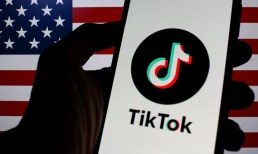Smartphones, artificial intelligence (AI) and virtual cards. It sounds like a corporate accountant’s dream setup, what with all those spending controls and reconciliation data flowing in, fortifying fiscal policy and squaring unruly card programs. Better than a dream really, because it’s happening.
More and more companies are choosing to automate and digitize troublesome elements of the business payments matrix. The latest Next-Gen AP Automation Tracker®, a PYMNTS and Bottomline Technologies collaboration, gets specific about how accounts payable (AP) automation brings efficiency to legacy systems by reducing manual tasks and their many errors.
Positive impacts may be the greatest in business-to-business (B2B) payments, which have clung to paper checks, spreadsheets and labor-intensive accounting methods as consumer payments flew by in the passing lane.
A Great Match
The combination of virtual corporate credit cards and AP automation packs a mighty appeal for companies in the endless quest to control costs. Indicators that a sea change is coming can be found in the outlook for system sales. Experts predict that spending on AP automation will jump from $1.9 billion in 2019 to over $3 billion in the next four years as adoption snowballs.
That’s being driven in part by virtual cards and the new levels of control they deliver. Fine-tuned spend management is very much a trend in the roaring 2020s, and no card product can match virtual for its menu of permissions and limits. When paired with an AI-powered payments platform, virtual cards can straight eradicate some issues associated with corporate card accounts, from accidental use to employee fraud and numerous other scenarios.
Advertisement: Scroll to Continue
“Virtual cards digitally deliver payment instructions and data to vendors and [return them] back to AP for reconcilement,” said Brian Greehan, vice president at Bottomline Technologies. “Exact match controls make virtual cards easy to use and reconcile, quickening key components of the invoice-to-pay process.”
Word of the powerful AP automation-virtual card combo is spreading fast, and integration fears are about the only remaining hurdle for many companies. According to one recent survey, 65 percent of finance professionals believe that AI (and adjacent products like virtual cards) are about to have a huge impact, but 45 percent of respondents still have implementation fears.
Artificially intelligent accounting software and new virtual ways of spending company money will produce anxiety for corporate treasurers. That’s a given. But PYMNTS research found that nearly half of accounting pros recently surveyed are ready to make the move to electronic invoices and virtual cards — spending on the latter is expected to $355 billion within two years.
AP As Can Be
The path from legacy bookkeeping to AP automation isn’t without twists and turns. While certainly more secure and transparent, these systems have their weaknesses. Fraud remains a concern, as always. But with all the control and transparency gained by digitizing and automating AP, it’s hard to make a case against this upgrade.
Working capital also fares better in a virtual card/AP automation environment, and the latest Next-Gen AP Automation Tracker also details how virtual cards help companies earn and redeem rebates with immense positive ramifications.




